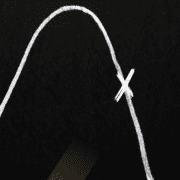The Theory of Interest and Prices in Paper Currency
The behavior of the dollar system is nonlinear and counterintuitive. In my reading, I have rarely encountered understanding of even the mechanics, much less the dynamics that drive it. Most debate is stuck on level zero: money printing as panacea vs. imminent hyperinflation.
This is a tragedy, because the monetary system is in the final stages of self-destruction, though not by runaway rising prices. As one would expect of any terminal patient, the pathologies are numerous and severe. We just need to take off the price-blinders to see them.
This is my theory of how interest and prices are set under our corrupt fiat paper system. I wrote it in six parts, and then wrote one more paper that should also be included in the series. This blog entry serves as the single landing page for all seven papers.
In Theory of Interest and Prices in Paper Currency Part I (Linearity), I discuss the concepts of nonlinearity, dynamics, multivariate, state, and contiguity. I show that whatever the relationship may be between prices and the money supply in irredeemable paper currency, it is not a simple matter of rising money supply –> rising prices.
In Theory of Interest and Prices in Paper Currency Part II (Mechanics), I move on to the mechanics of the formation of the bid price and ask price, the concepts of stocks and flows, and the central concept of arbitrage. I show how arbitrage is the key to the money supply in the gold standard; miners add to the aboveground stocks of gold when the cost of producing an ounce of gold is less than the value of one ounce.
In Theory of Interest and Prices in Paper Currency Part III (Credit), I look at how credit comes into existence via arbitrage with legitimate entrepreneur borrowers. I also look at the counterfeit credit of the central banks, which is not arbitrage. I introduce the concept of speculation in markets for government promises, compared to legitimate trading of commodities. We also discussed the prerequisite concepts of Marginal time preference, marginal productivity, and resonance.
In Theory of Interest and Prices in Paper Currency Part IV (Rising Cycle), I introduce the rising cycle. The central planners push the rate of interest down, below the marginal time preference and unleash a storm whose ferocious dynamics are more than they bargained for. The hapless subjects of the regime have little recourse, but they do have one seeming way out. They can buy commodities. The cycle is a positive feedback loop of rising prices and rising interest rates. Ironically, the central planner’s clumsy attempt to get lower interest results in rising interest. Alas, the cycle eventually ends. The interest rate and inventory hoards have reached the point where no one can issue more bonds or increase their hoards.
In Theory of Interest and Prices in Paper Currency Part V (Falling Cycle), I discuss the end of the rising cycle. There was a conflict between commodity speculation and leverage. Leverage won. Liquidations impaired bank balance sheets, and the result was a spike in the interest rate. It finally rose above marginal time preference. Unfortunately, it rose over marginal productivity as well. Slowly at first, the bond market entered a new bull phase. It becomes ferocious, as it pushes down the interest rate, which bleeds borrowers of their capital. Companies find it harder to make money and easier to borrow. They are obliged to borrow to get a decent return on equity. In short, they become brittle.
In Theory of Interest and Prices in Paper Currency Part VI (The End), I present The End. At the beginning of Part I, I noted in passing that we now have a positive feedback loop that is causing us to spiral into the black hole of zero interest. In astrophysics, the theory says that a black hole is a singularity with infinite gravity at the center. There is a radius called the event horizon, and everything including light that gets inside this radius is doomed to crash into the singularity. This is a good analogy for the end of the irredeemable financial system.
Finally, The Theory of Interest and Prices in Practice is a follow-up piece, which should be considered part of the series. As the rate of interest rose in 2013, many people asked me if I thought this was a new rising cycle. The short answer is no. The long answer is given in this paper, which looks at the interest rate as the spread between cash and bonds. It’s perverse and counterintuitive.







“The behavior of the dollar system is nonlinear and counterintuitive. In my reading, I have rarely encountered understanding of even the mechanics, much less the dynamics that drive it. Most debate is stuck on level zero: money printing as panacea vs. imminent hyperinflation.”
Rarely means that there is someone who has got it right at least to some degree, right? Would it be possible to tell me who? I wish to do some reading on this subject but I have never found other people talking about it. Only Carl Menger, on the basic of the mechanics.
Thanks